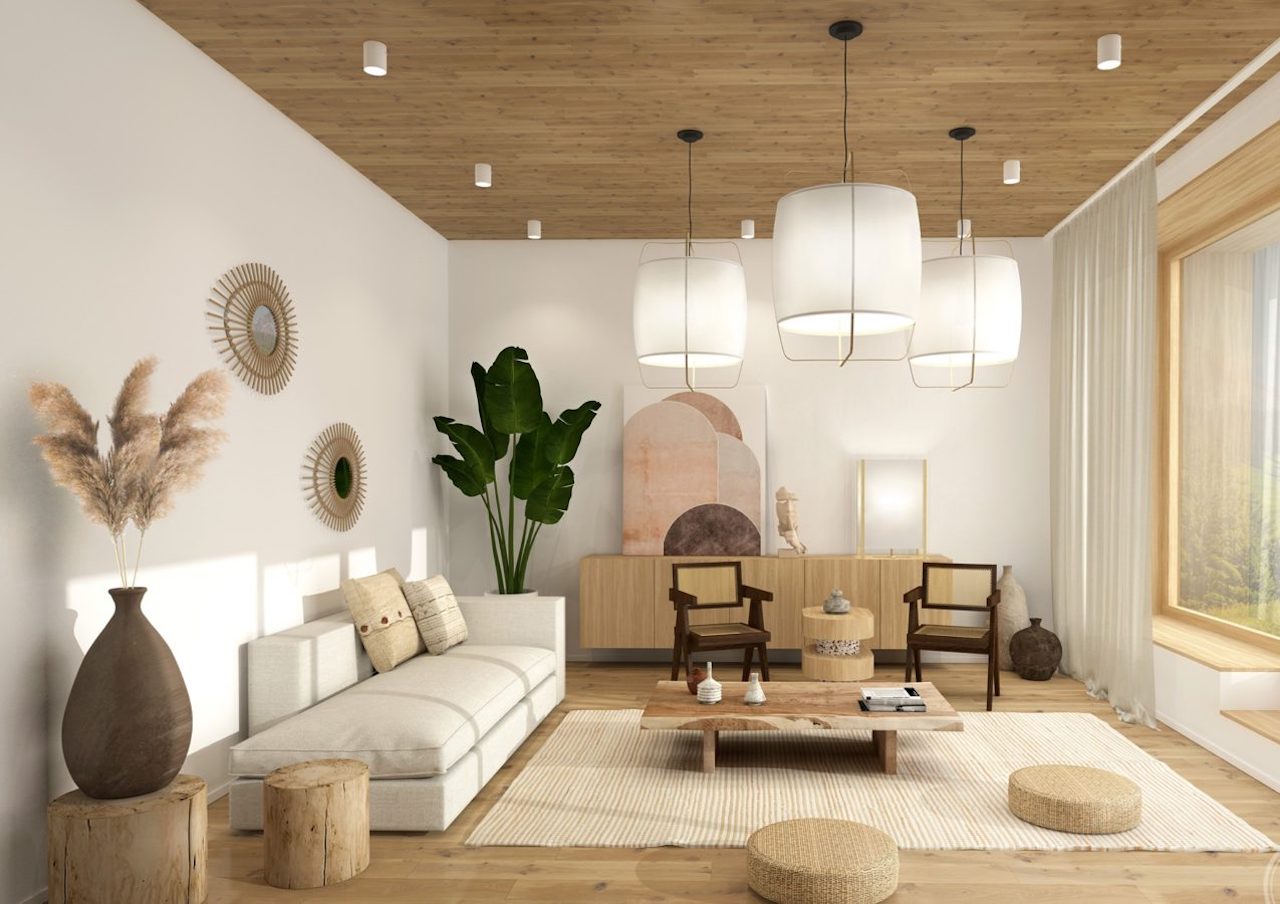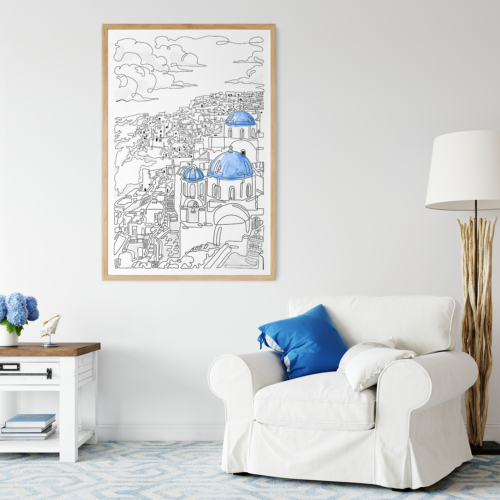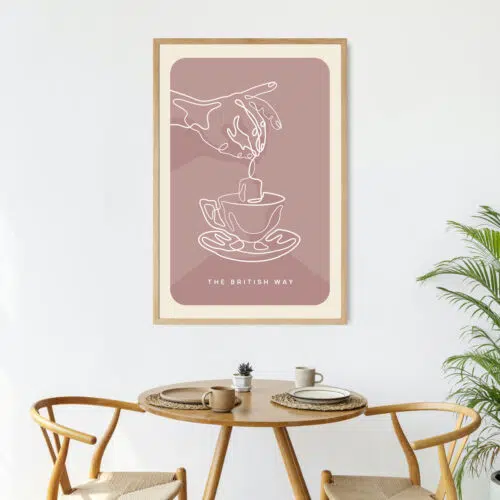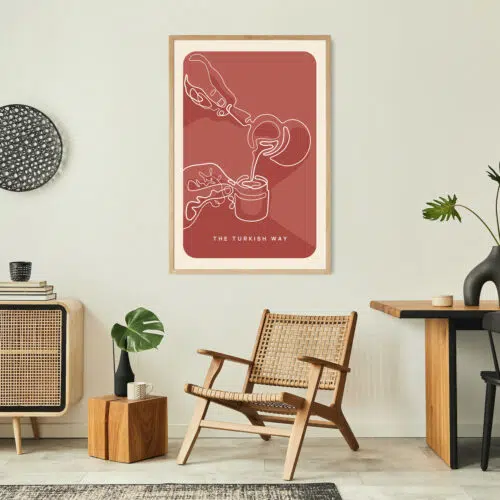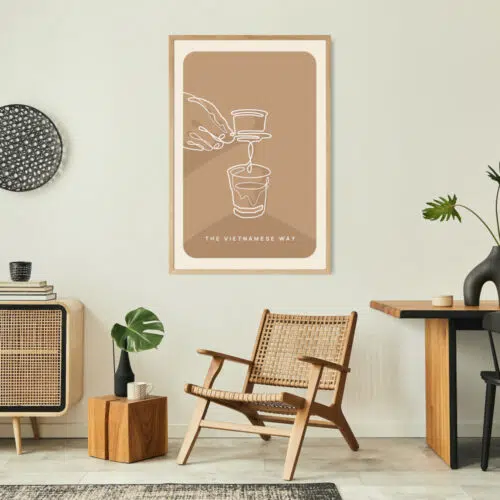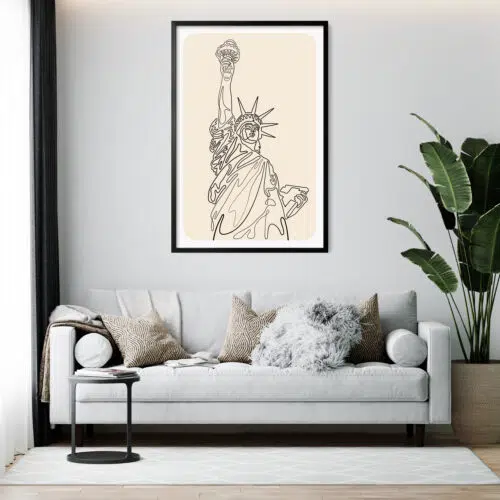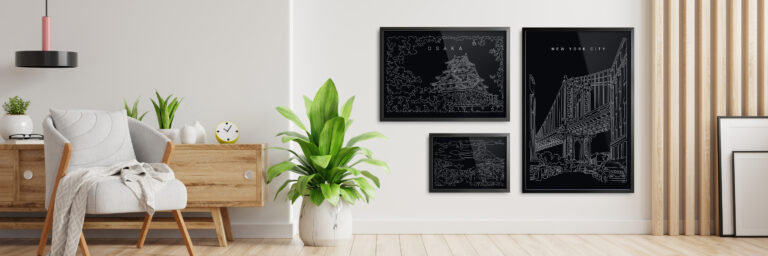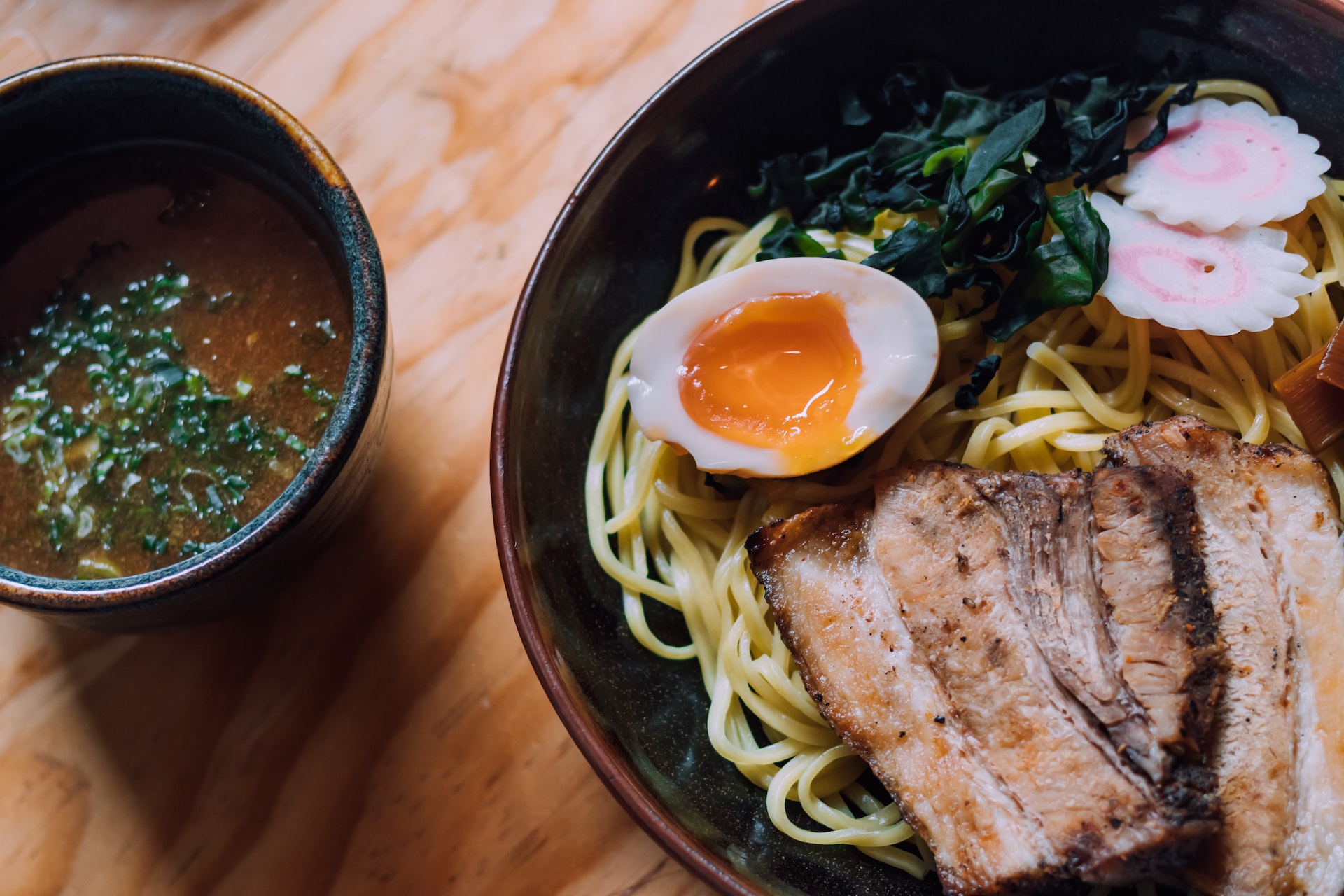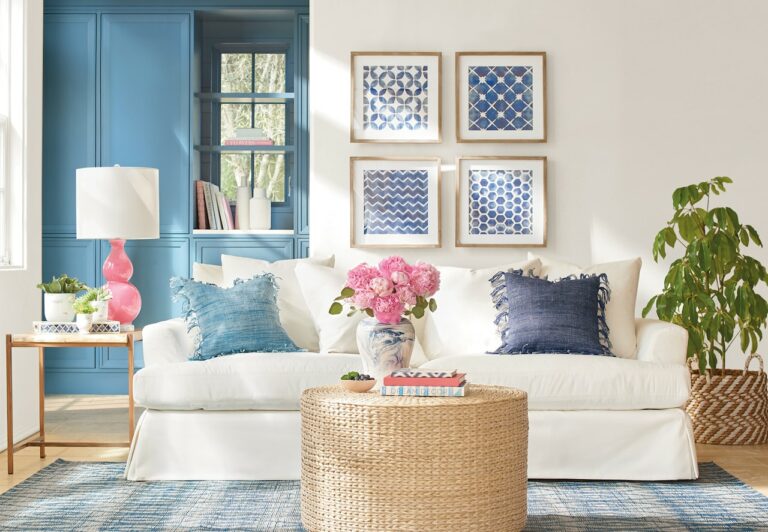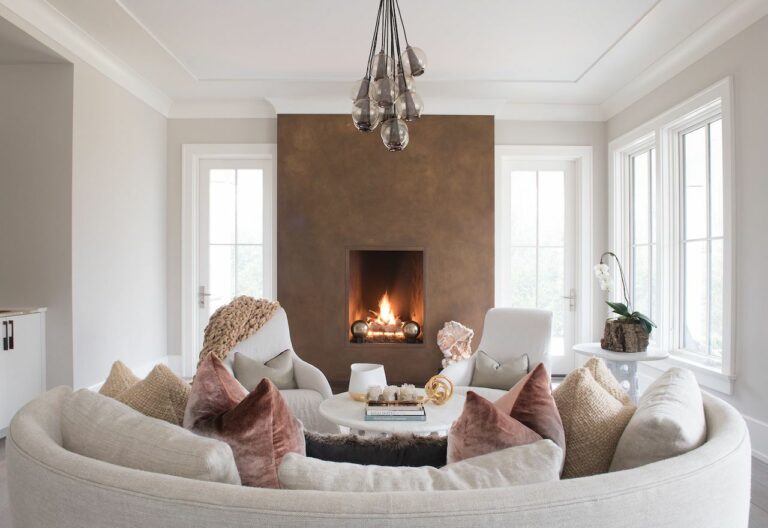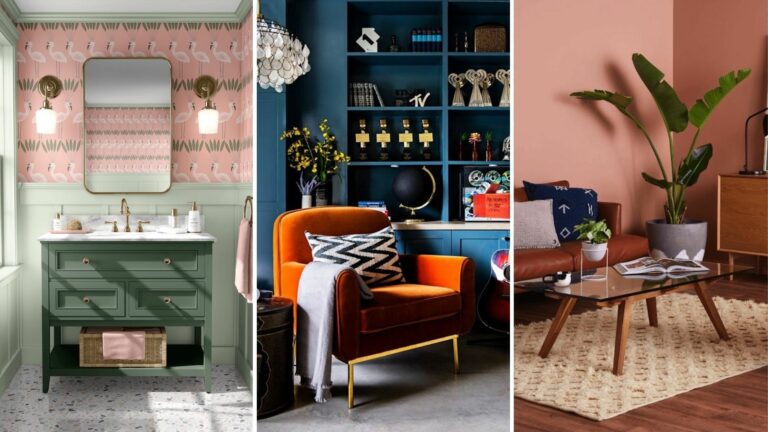The Japandi interior design style has grown in popularity over the past few years — for very good reasons. Combining functionality with harmonious style, pulling principles from Japandi design allows you to craft the restful home you’re craving. When done well, your inspired interior will be warm, welcoming, and oh-so-timeless. All you need to do is decide whether to transform your entire abode or just one room.
We’ll ensure you can bring Japandi style to every room of your home effortlessly by first expanding on what the style is before diving into the tips and tricks for crafting Japandi-inspired bathrooms, bedrooms, kitchens, and living rooms.
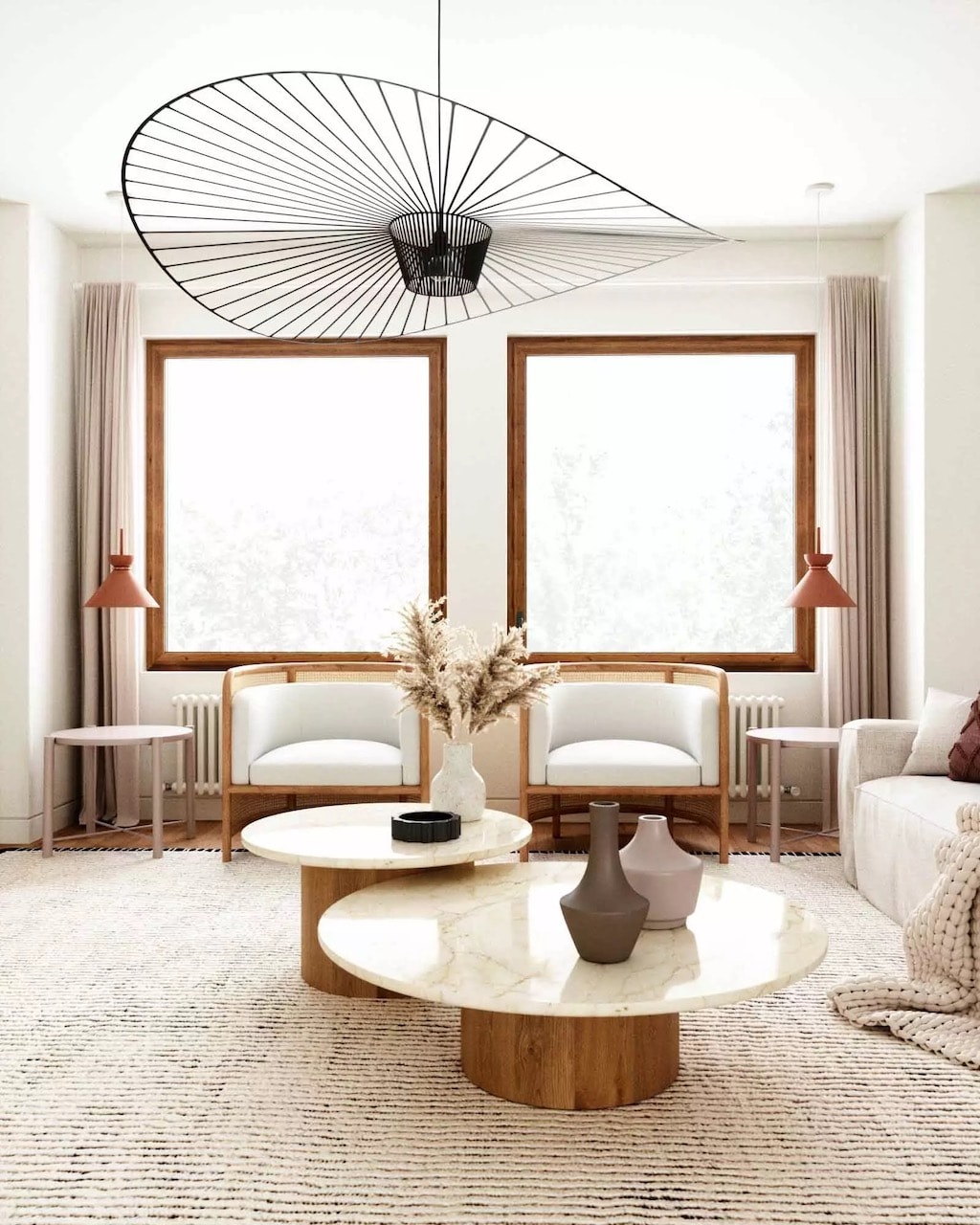
What Is The Japandi Style?
As the name suggests, Japandi is a fusion of Japanese and Scandinavian interior design styles.
Japandi combines two main principles — wabi-sabi, the Japanese way of life involving slow living, minimalism, and contentment, and hygge, the Scandinavian practice of embracing coziness, comfort, and well-being.
Related Post: What Is Wabi Sabi Interior Design And How Can This Japanese Philosophy Make Your Life Better
Furniture and Decor You Can Expect to Find in a Japandi-Inspired Home
This style blends modern lines found in Scandinavian design with the functional, sleek aesthetic of modern Japanese living. Think “welcoming minimalist.”
In a Japandi home, you’ll find neutral tones on the floors and walls, rugs made from natural fibers, various textures in muted shades on fabric-covered furniture, and wooden or stoneware elements like chairs, vases, and more.
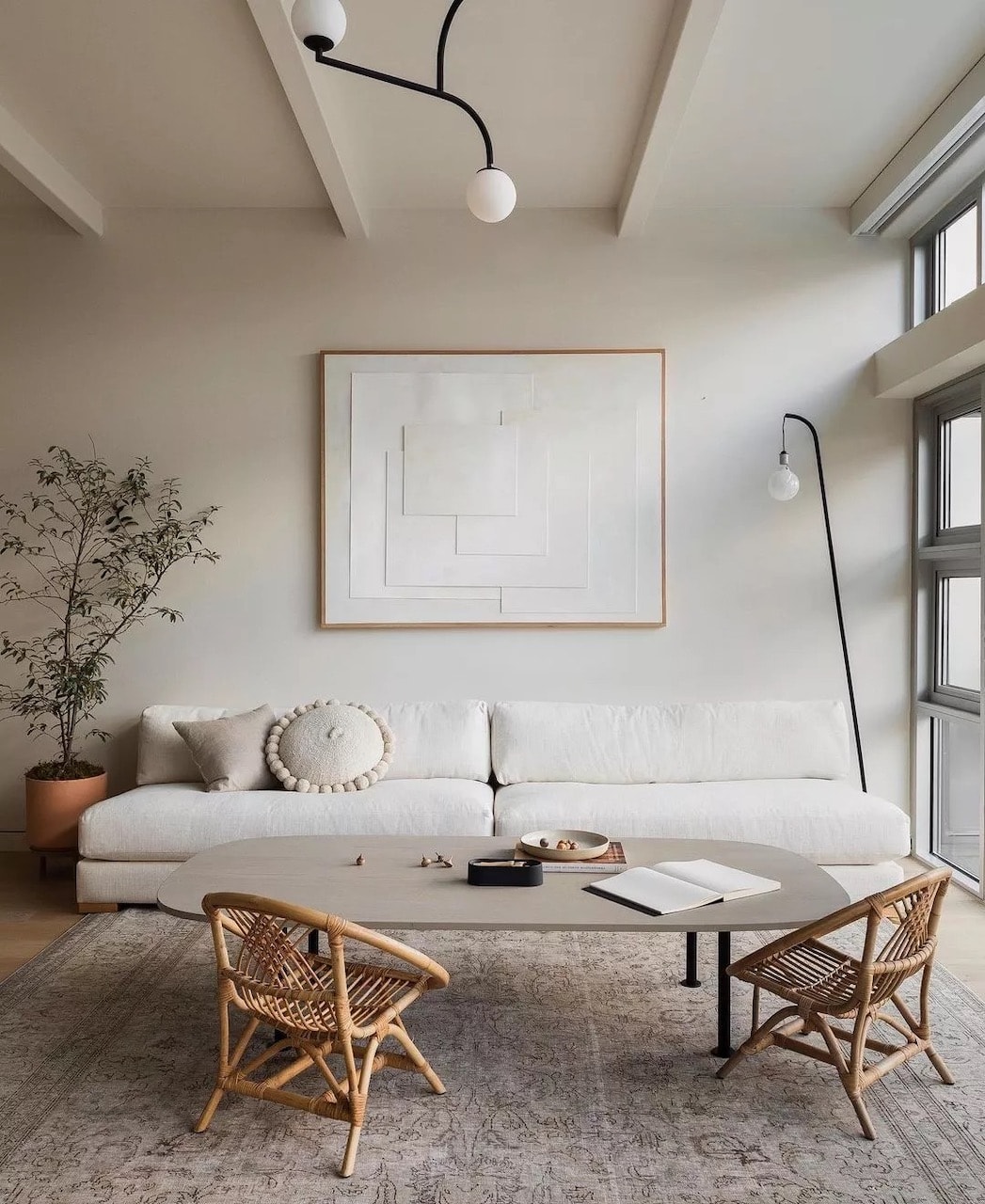
How to Easily Bring Japandi Into Every Room of Your Home
Even without an innately keen eye for design, you can bring Japandi into every room of your house by sticking to these foundations:
- Neutral color palette (e.g., taupe, beige, sand, cream, stone)
- Natural materials (e.g., wood, bamboo, stone)
- Zero clutter
- Luxurious textures
- Low-key lighting
But we’ll go over several practical tips per room that will help you welcome Japandi into your home.
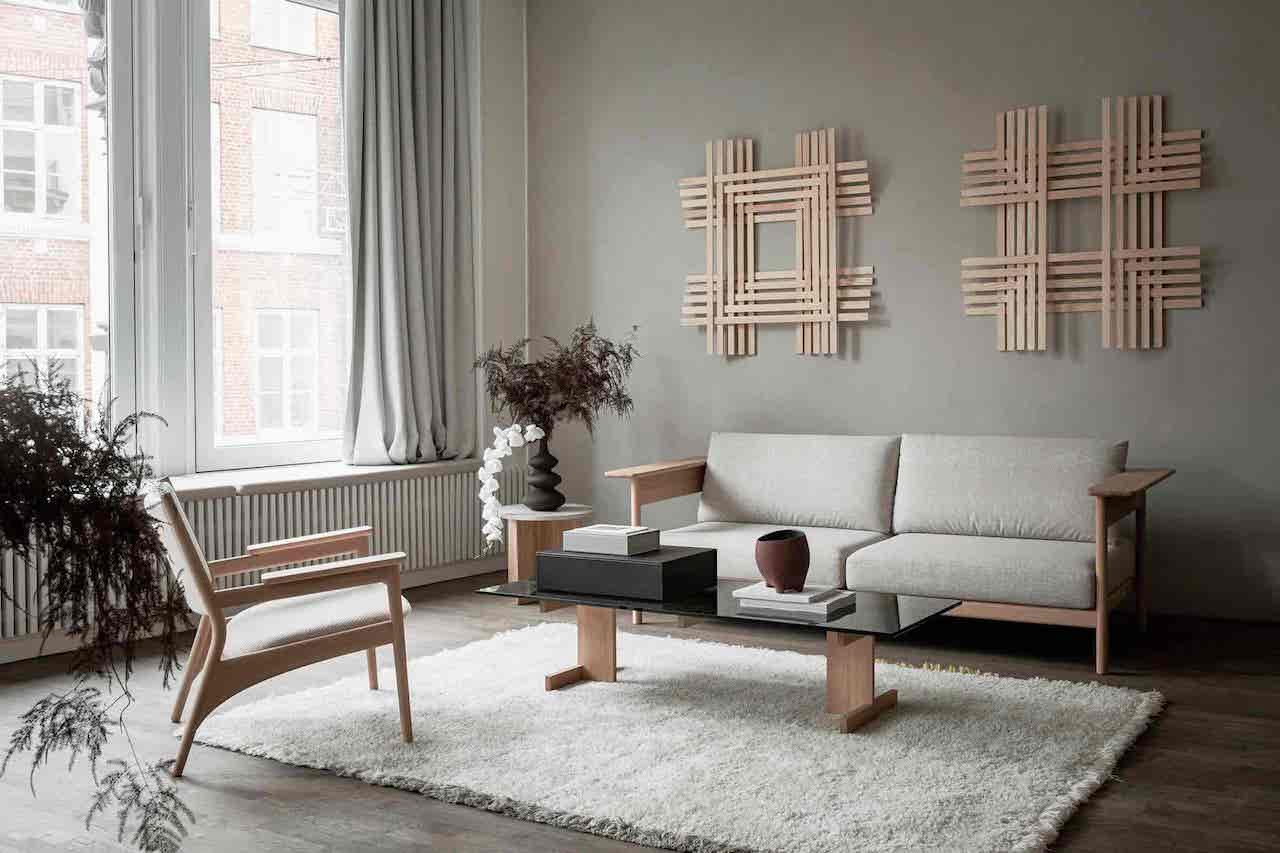
Japandi in the Bedroom
This hybrid interior design style is rooted in high-quality craftsmanship, clean lines, and natural materials to create a harmonious, comfortable environment — what more could you want from your bedroom? A restful space is necessary for superior sleep quality, and Japandi is the perfect way to achieve that atmosphere.
1. Let Natural Light Flood In
Japandi, tranquility, and airy spaces go hand-in-hand-in-hand. And one way to achieve this is to maximize the amount of daylight flowing through your bedroom windows. If you have expansive windows, hang lightweight waved curtains that drape to the floor. They provide the desired mixture of modernity and luxury that Japandi interior stylists crave.
2. Stylized Pattern on One Wall
Yes, simplicity is crucial. But adding a stylized pattern to one wall (think blossoms or orchids) is a wonderful way to introduce an accent color, visual interest, and warmth. If you’re more of a wall-hanging enthusiast than a painted-on pro, why not try one of our hand-drawn one-line art prints of Osaka, Japan? The muted background color and minimalist design make it perfect for Japandi bedrooms.

3. Sleek Surfaces
Streamlined, handle-free designs for wardrobes and other bedroom storage are essential for harmony. Remember, it’s all about uncluttered aesthetics, so fitted closets are particularly beneficial for keeping clothes and other items out of sight.
4. Get the Timber Paneling Look
Both Scandinavian and Japanese interior designs focus on appreciating the beauty of nature, particularly wood. So, use sleek vertical wood paneling as a warmth-bringing focal point in your bedroom. We suggest pine, oak, cedar, cypress, teak, or red pine.
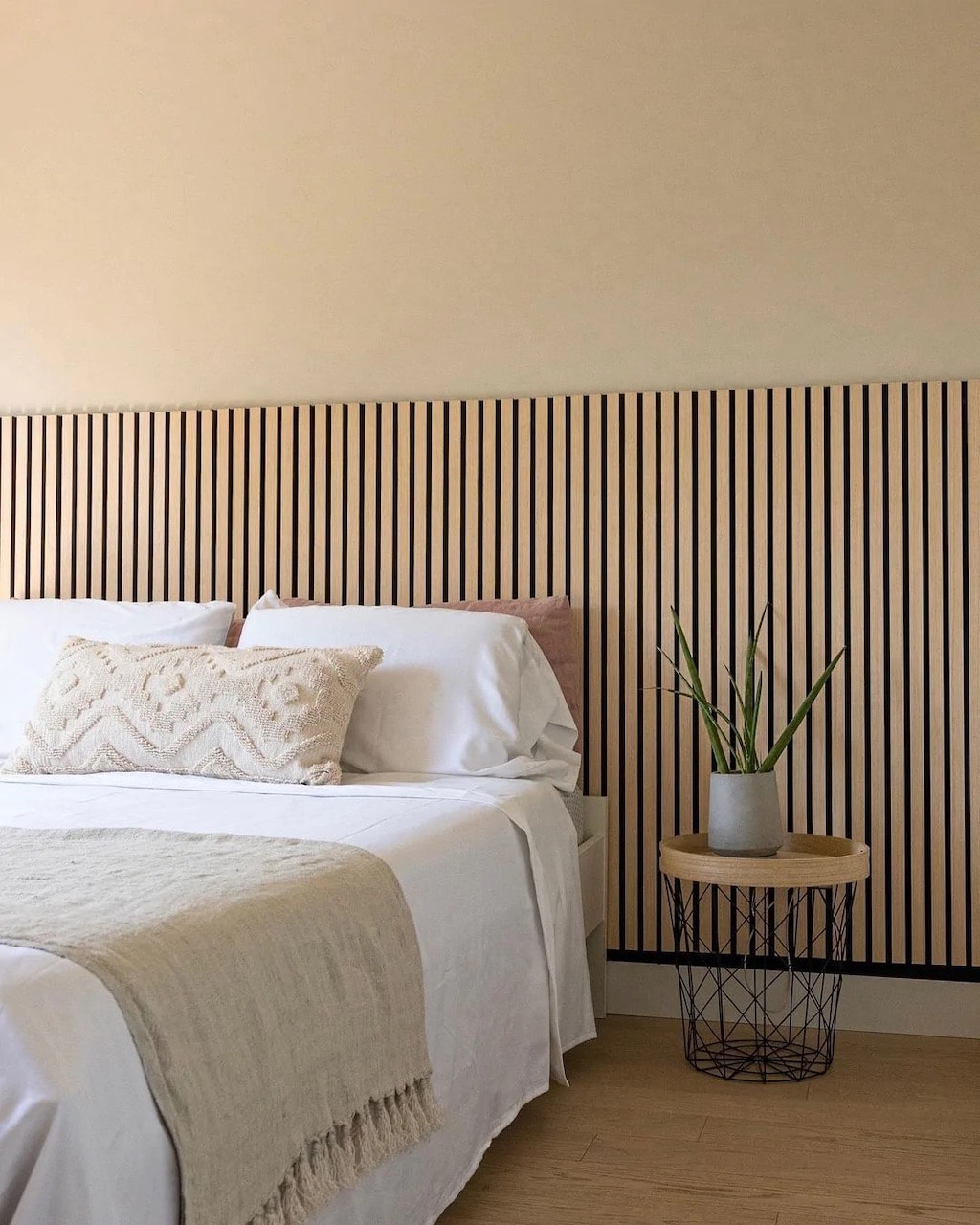
5. Fuse Warm and Cool Colors
Japanese color palettes tend to be muted. But Scandinavian design uses lots of cool tones. Mixing the two with the Japandi style brings ultimate peace and tranquility. For best results, choose cool tones and paler colors for the walls and use deeper, warmer shades for soft furnishings.
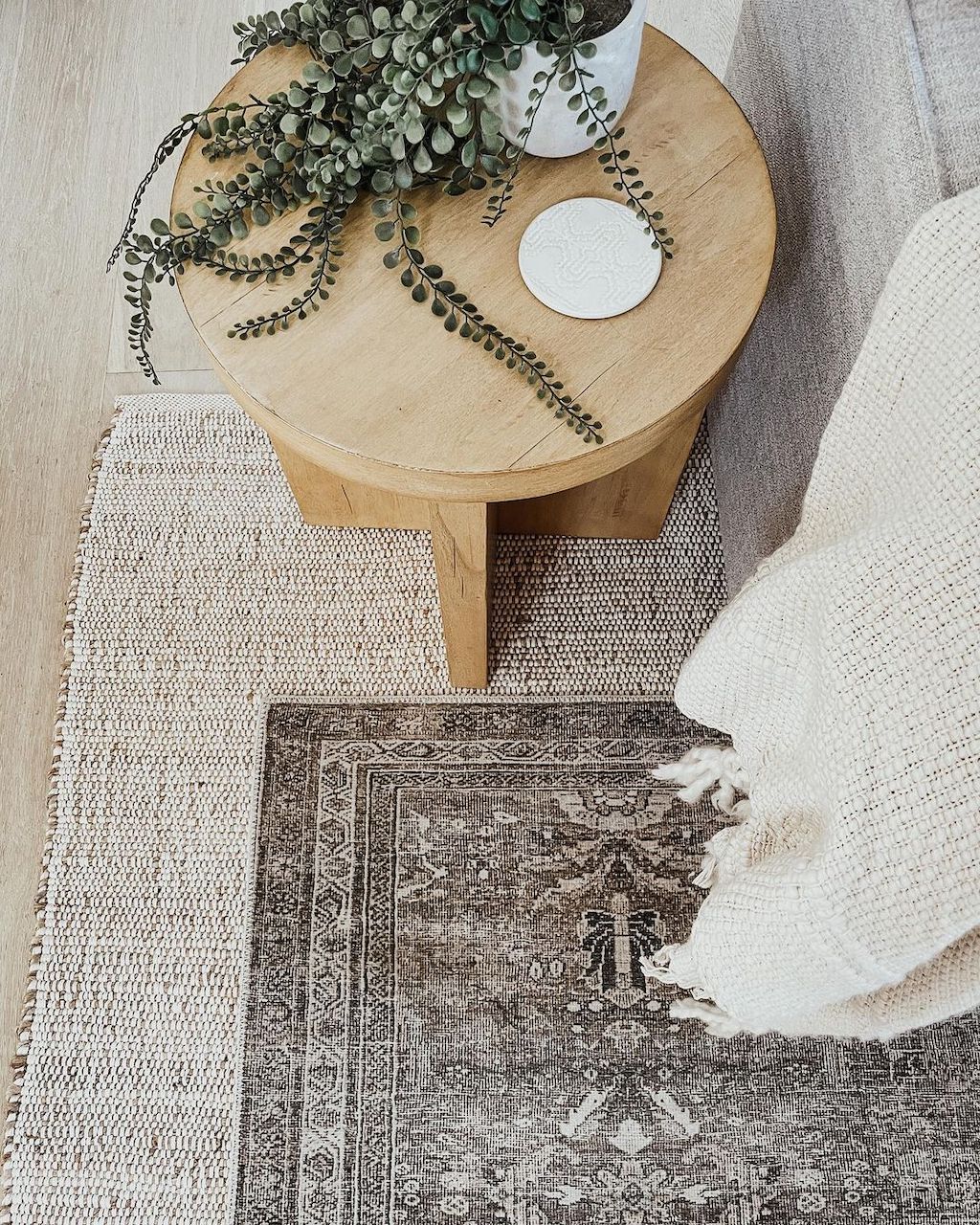
6. Opt for Low-Level Furniture
Obstacle-free rooms are a core part of minimalist interior design. Make sure you leave “breathing” space around your furniture to increase your home’s flow. Japandi-style beds are low-level, creating a more airy, spacious feel in your bedroom. They’re a mixture between a futon and a low-rise bedstead found in Scandi homes.
7. Focus on Bed Linen
Naturally, your bed will be center stage here. So, it’s the area you should focus most of your Japandi styling. Layer the bed with linens in muted tones for a calming effect, or add an earthy red to increase warmth.
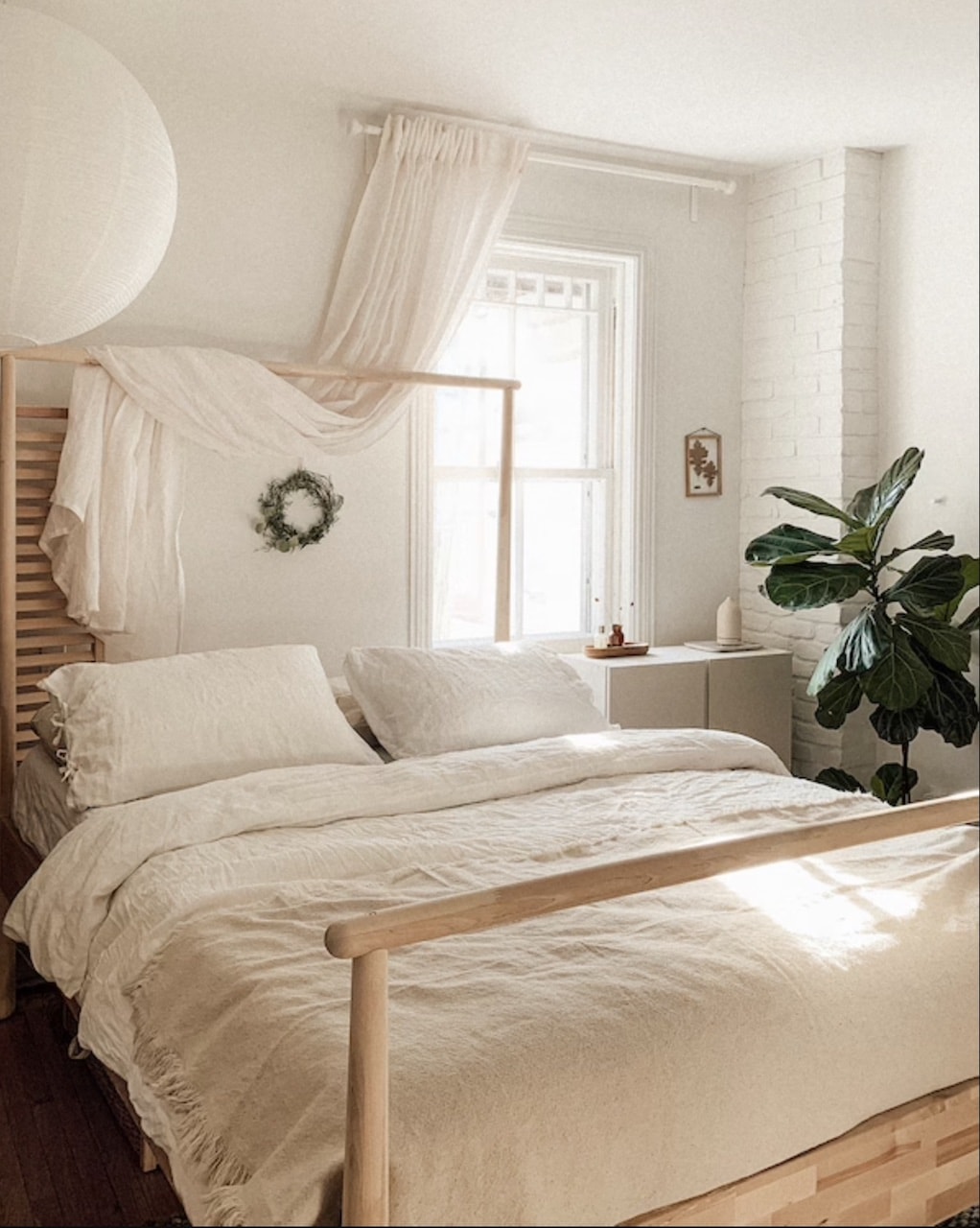
Japandi in the Bathroom
You can achieve the Japandi bathroom you’ve always wanted by increasing its spaciousness, stylishness, and comfort. While it’s certainly helpful to decide on an interior design style before remodeling, a few of our tips will work if you’ve already made significant choices (like tiles and vanities).
1. Choose Glass, Marble, or Ceramic Tiles
Tile is durable, functional, and decorative. Not to mention it’s one of the easiest ways to bring Japandi into the bathroom! Marble tiles work wonders with other natural materials and colors. However, glass reflects light beautifully (and, as you know, natural light is a major component of this design style).
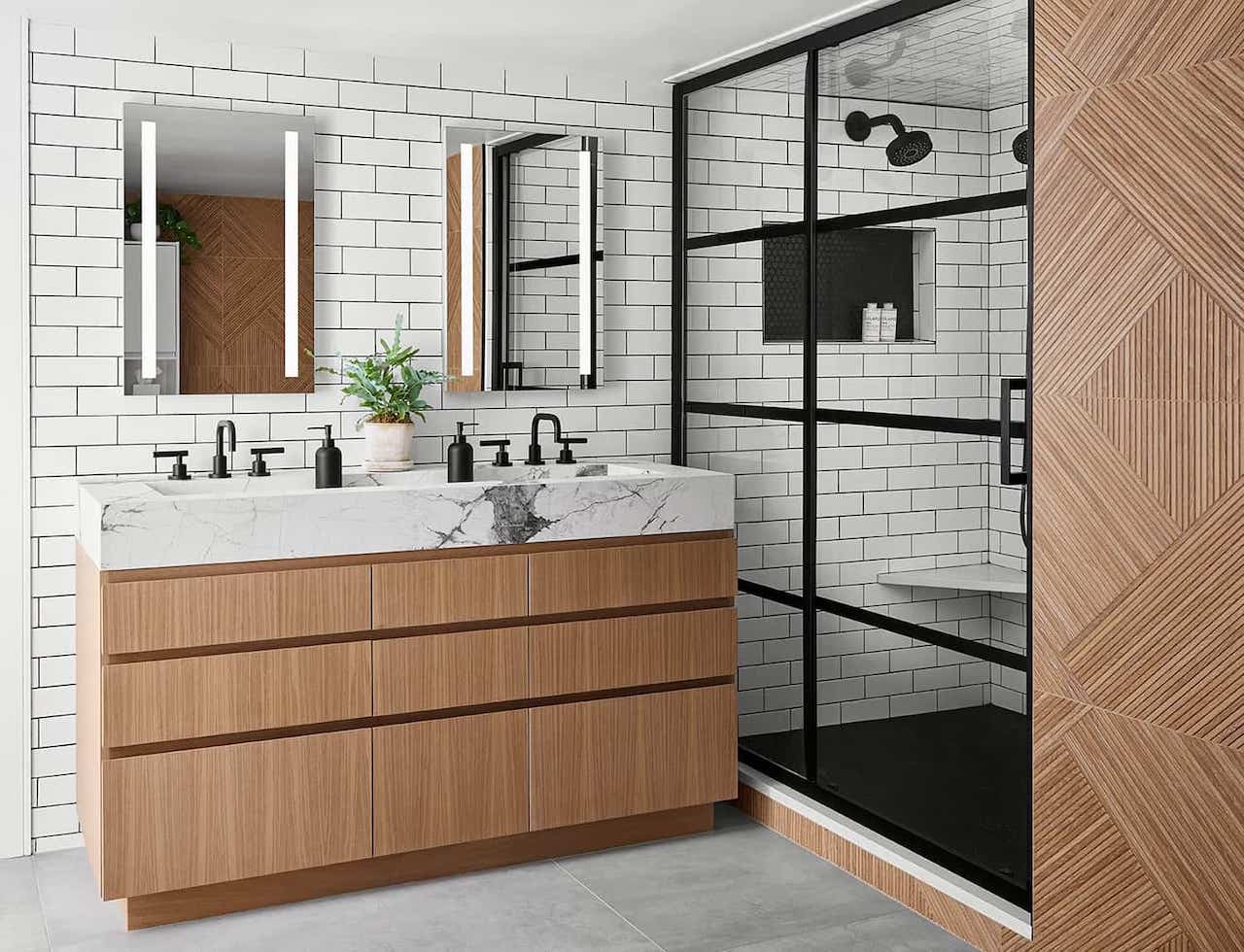
2. Be Mindful of Your Lighting Choices
For maximum Japandi-ness, add a pendant lighting fixture alongside the standard recessed lights found in most western bathrooms. One made of bamboo or glass will add beauty and functionality to the room.
3. Opt for a Bamboo or Stone Vanity
Choose a vanity made from light-colored wood, bamboo, or grey stone to add natural materials to your Japandi bathroom.
4. Organic Cotton Shower Curtains
The style boasts sustainability and cohesiveness. Thus, your shower curtain should be in a muted tone that matches your bathroom’s color palette and is made from natural materials (we recommend organic cotton).
Shop The Look Here: The Citizenry
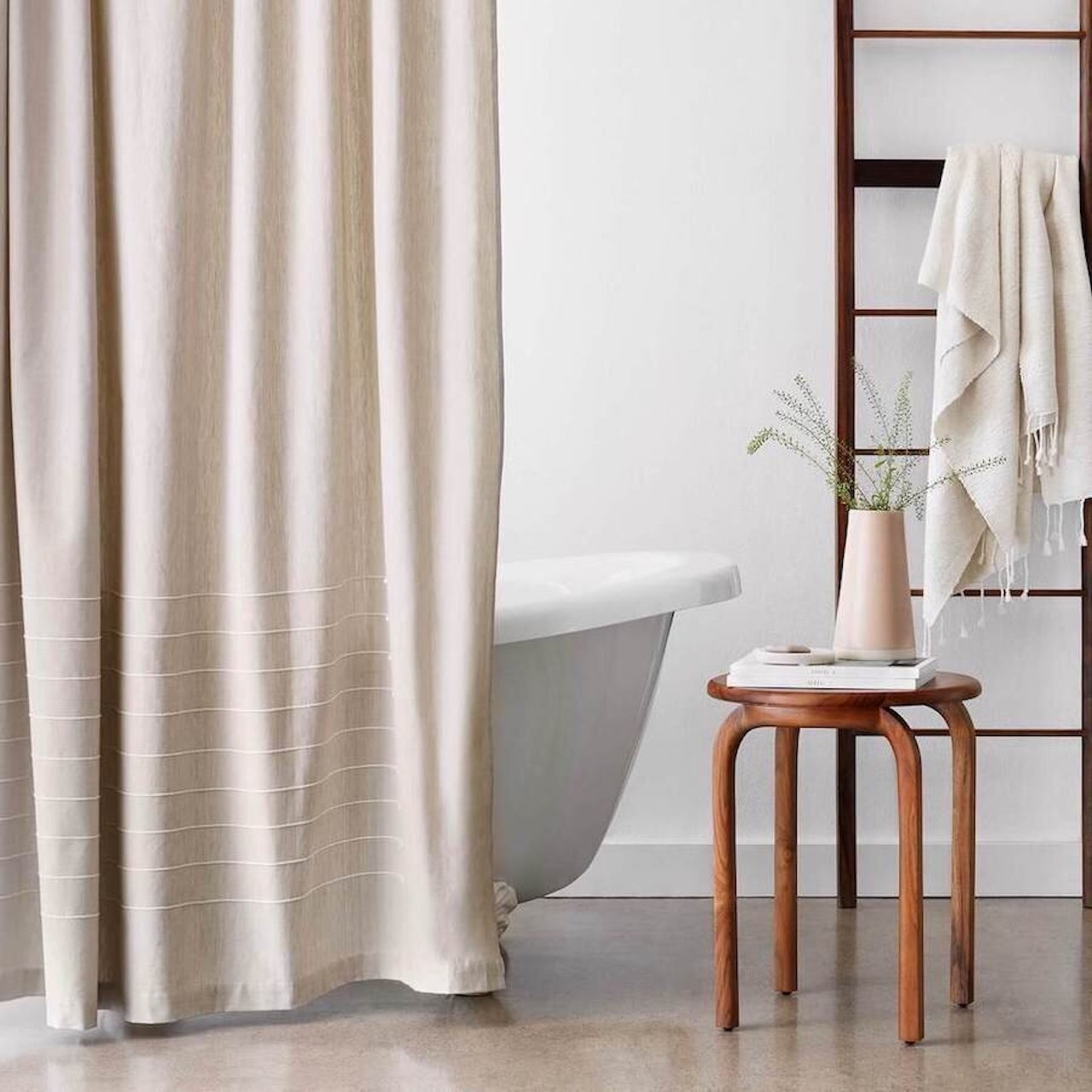
5. Earth-Tone Accessories
Pick at most two colors from the earth tones already in your bathroom for your accessories, such as soap dishes, towel racks, toilet paper holders, and more. Again, make sure they’re made from natural materials like hemp, ceramic, rattan, or stone.
6. Add Plants That Don’t Require Much Light
Most bathrooms don’t have great natural light. So, choose plants, like the spider plant, that are easy to grow and don’t need much sunlight or water.
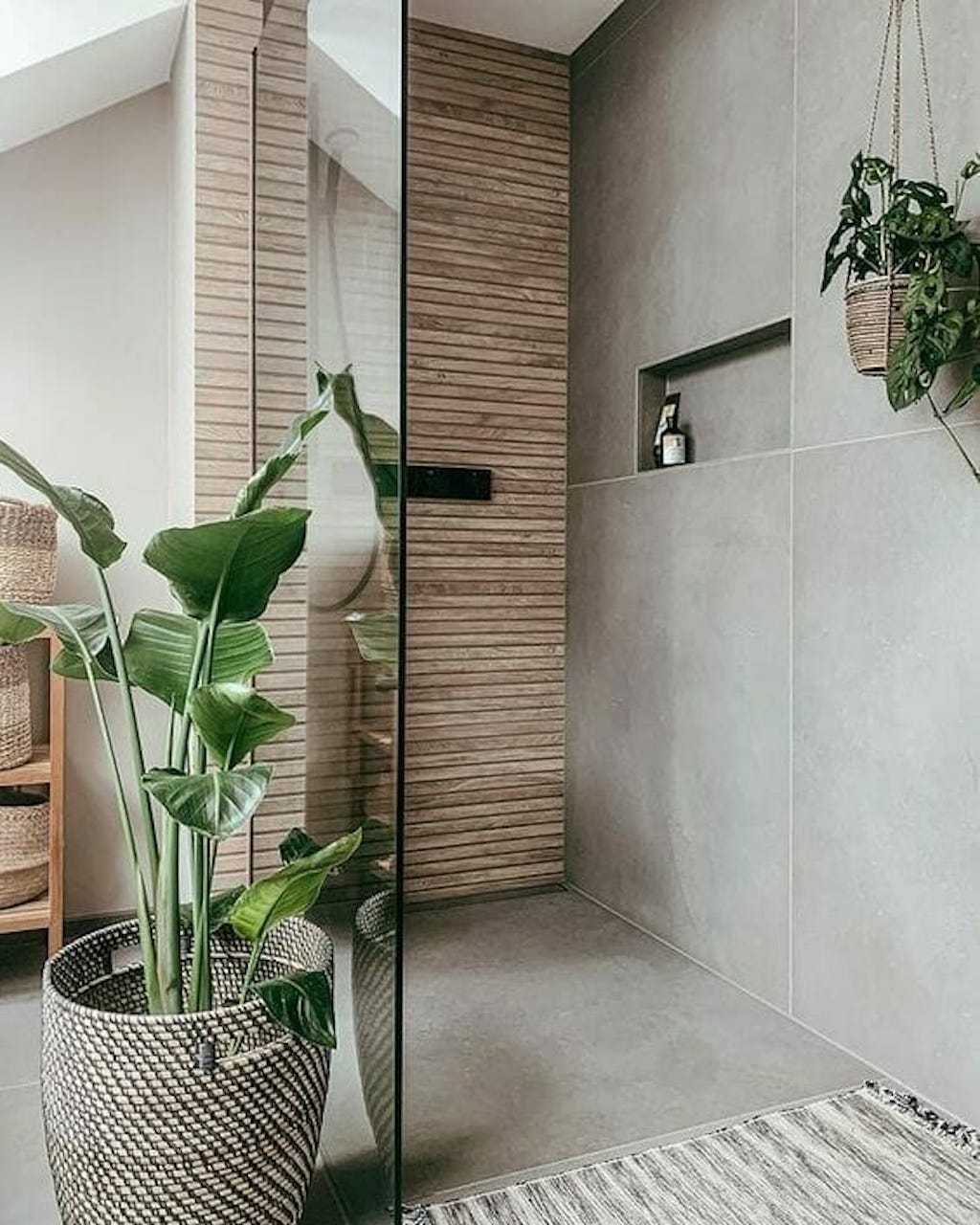
7. Use Dark Colors Sparingly
Warm tones and soft whites are the pinnacles of Japandi bathrooms. However, adding a pop of deeper, darker shades here and there provides added interest and a still-tranquil contrast.
Japandi in the Kitchen
Bringing Japandi into the kitchen means ensuring optimal functionality and a warm, inviting space, which is easier to achieve than you might think.
1. Functional Minimalism
Simplicity is calming, so clean lines and uncluttered surfaces are essential in a Japandi kitchen. Handleless cabinets are a great place to start. They immediately bring a seamless look to your interior. Since functionality is a staple in Japandi, it’s important that your kitchen is tailored to the way you use the space.
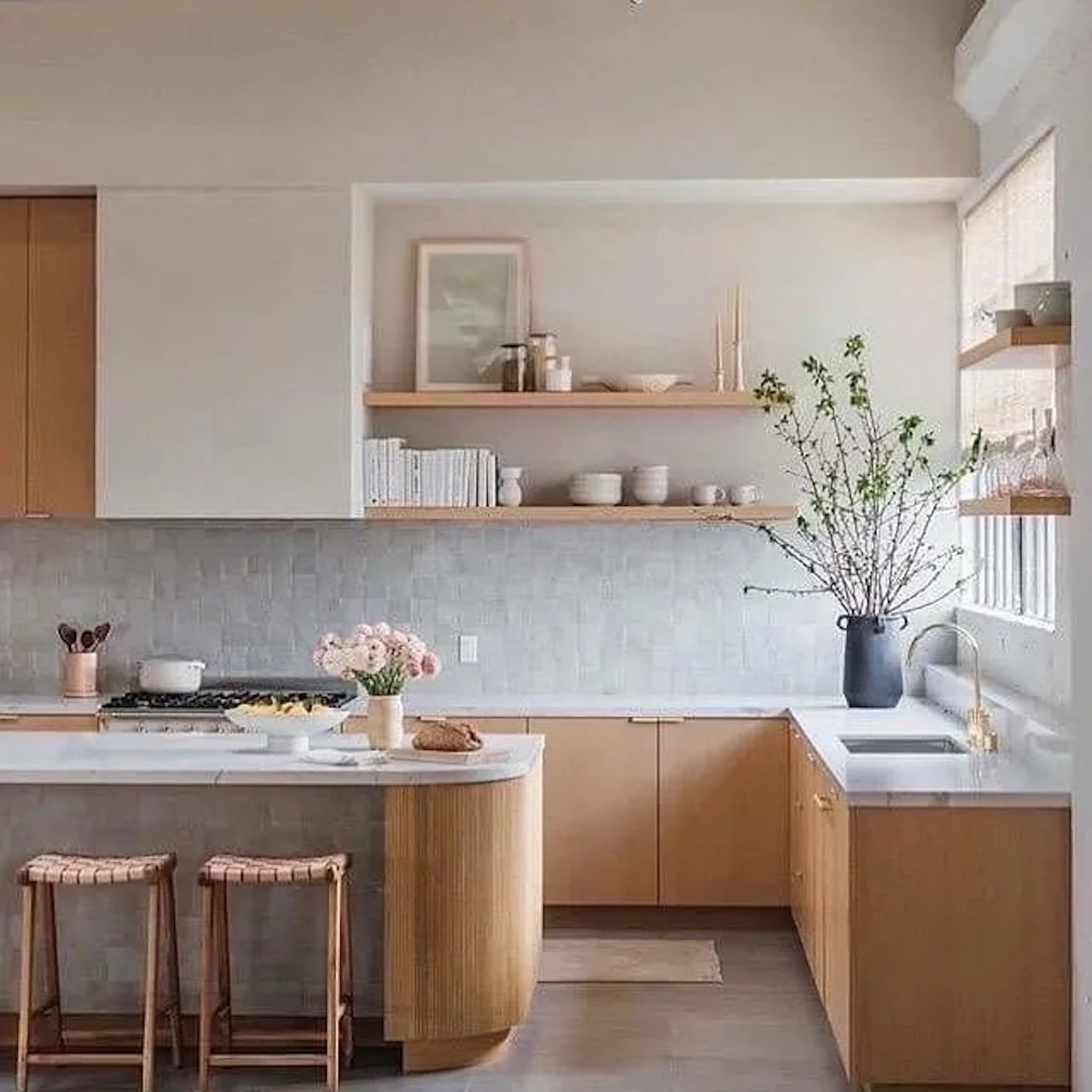
2. Use Texture to Accessorize
Different textures like concrete, organic linens, handcrafted ceramics, and lush foliage add interest and help bring the outside into the kitchen.
3. Icy White Worktops
Most Japandi kitchens suit white worktops for a dramatic yet complementary and luxurious effect. Or, try finding one with grey or muted veining for an even more Japandi feel.
4. Open Shelving
Minimal open shelving displaying your favorite pieces adds warmth and interest to an otherwise sleek kitchen. It provides the perfect balance, a key part of Japandi styling.
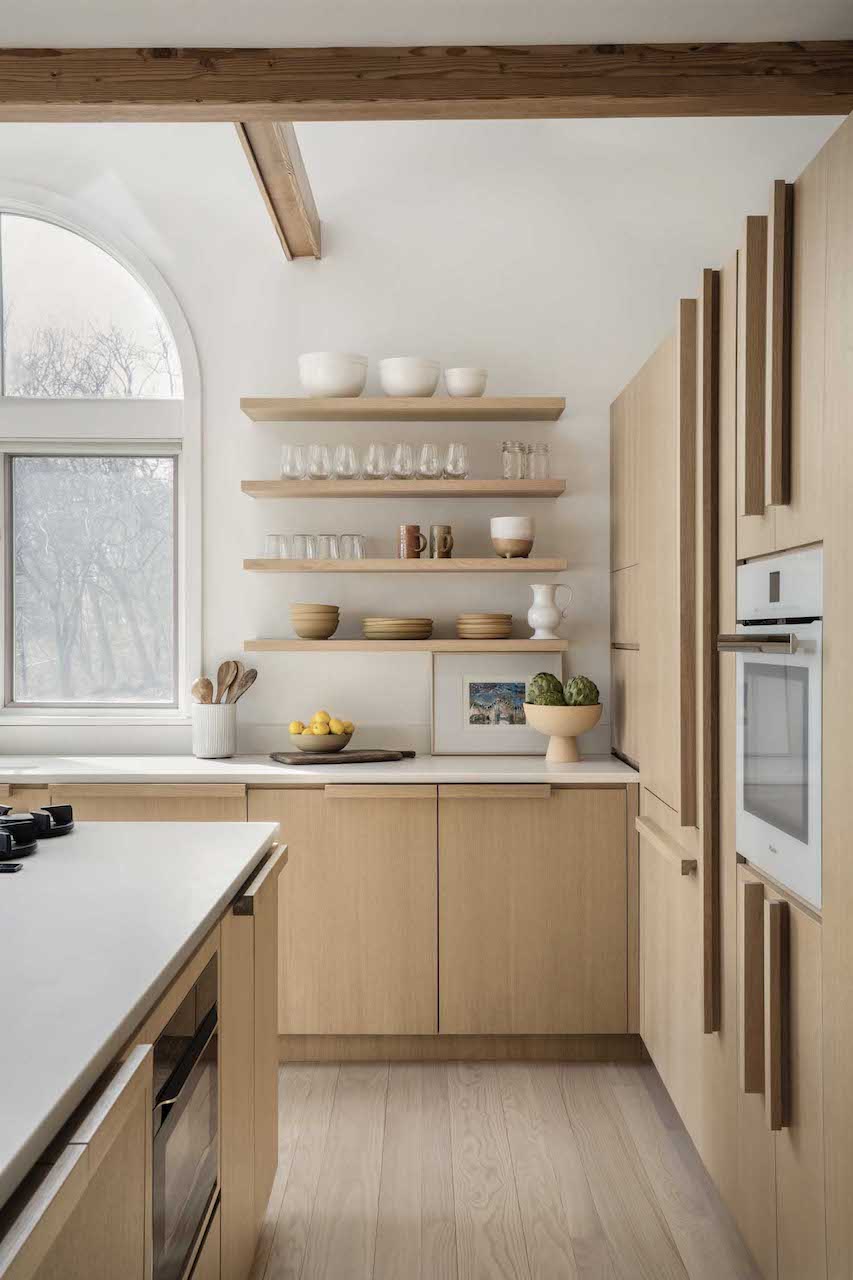
5. Wood on Wood
Combining wooden lighting features with wooden floors and off-white walls draws the eye and creates cohesion throughout your kitchen.
Japandi in the Living Room
The living room is often the central hub of your home. So, the Japandi style of warmth and comfort works wonders to elevate the space.
1. Curved Furniture
It’s instantly soothing, inviting, and comforting, thanks to the absence of hard lines. And those feelings are only enhanced when combined with tactile fabrics like brushed cotton or velvet.
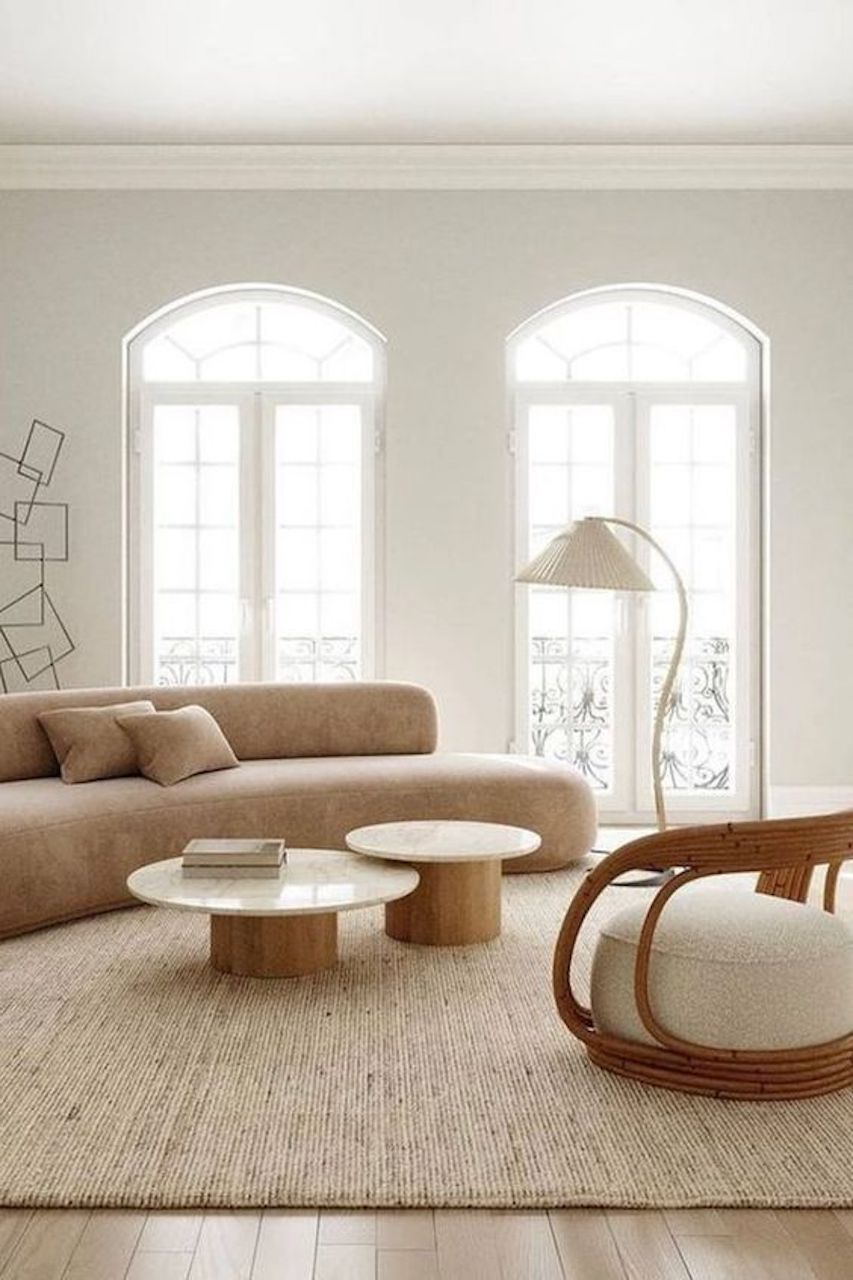
2. Cohesive, Calm Color Palette
The key to unlocking the Japandi style in your living room is crafting a cohesive, tranquil color palette. Stick to neutral tones with green accent pieces for the best effect.
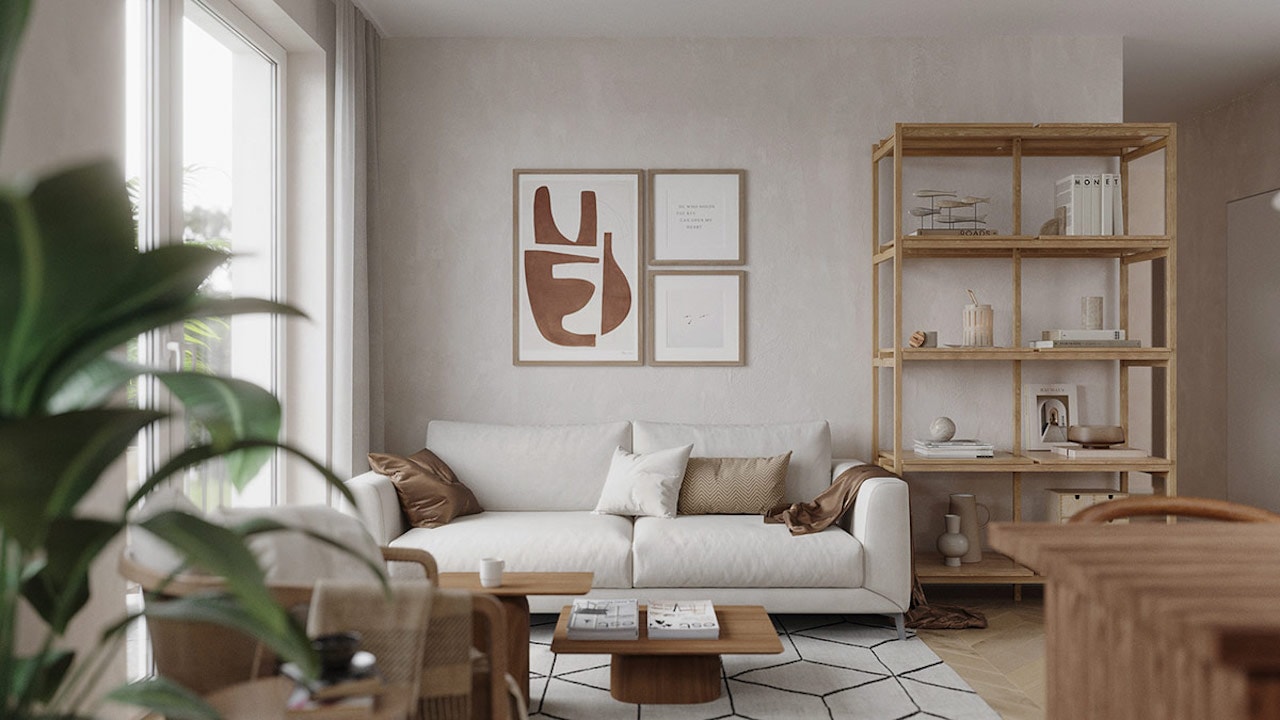
3. Combine Natural Materials
Mix and match textiles, wood, clay, and ceramics while keeping minimalism in mind for a dynamic look.
4. Choose Low-Level Furniture
Like in the bedroom, stick to low-level couches to improve the feeling of spaciousness and introduce an airy feel to your living room.
5. Minimalist Artwork
Simple artwork like this King Pigeon Pose Yoga One-Line Print or this Palm Springs One-Line Print adds interest without overcrowding your walls — ideal for Japandi-inspired spaces.
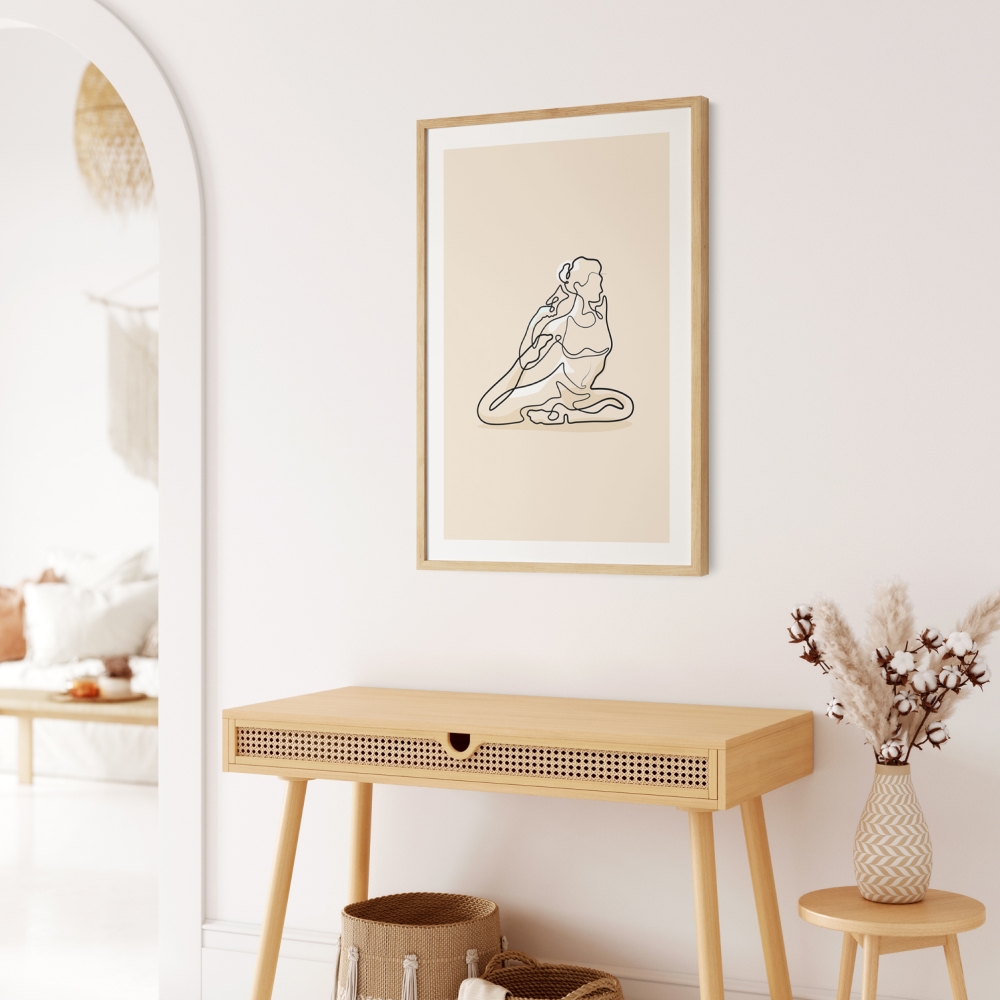
6. Layered Lighting
Soft lighting creates serenity, but the trick lies in combining it with mood lighting often seen in Scandi interiors. Ideally, strategically place lights to increase balance, creating light pools for warmth and coziness. Try reed lampshades to further encompass organic shapes and natural themes.
Final Thoughts
See? Bringing the Japandi style into your home is easier than it might seem at first! It’s all about functional minimalism, coziness, balance, and natural materials.
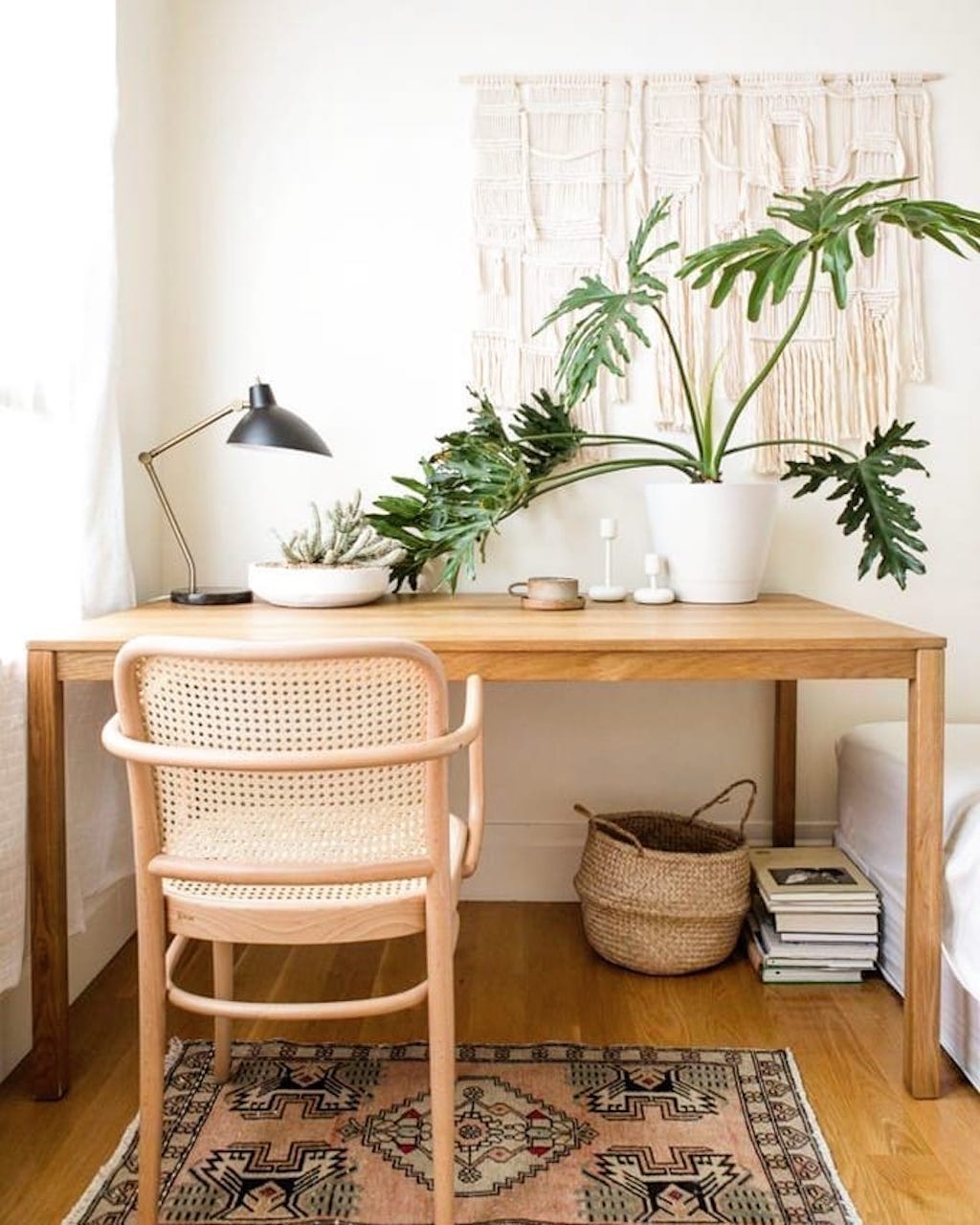
At EverLineArt, our vision is to enhance interior spaces through refined aesthetic line art, igniting creativity and fostering a sense of well-being in both personal and commercial arenas.
